Table of contents
Do you know the benefits of pink Himalayan salt?
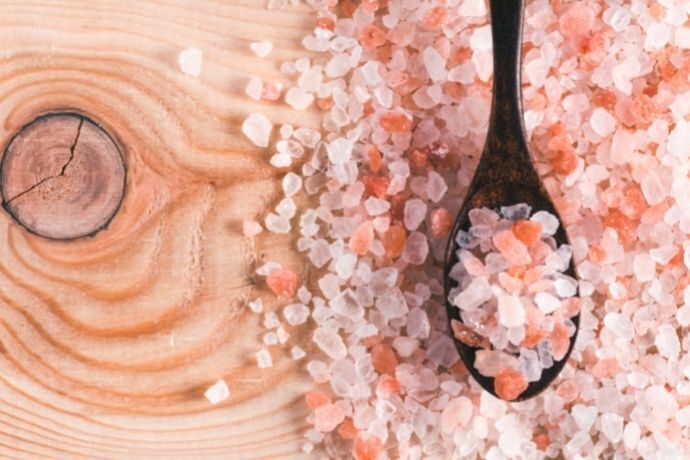
The so-called pink Himalayan salt is a unique type of salt found in only six mines, all located in the Himalayan mountain region. However, currently only the Khewra mine, located in a town of the same name in the Punjab province of Pakistan, is active in salt production.
There are several fake versions of pink salt that are marketed worldwide, but the legitimate salt can only be found in the aforementioned region. This unusual type of salt has gained worldwide notoriety because of its properties.
Unlike common table salt, which is refined and gains the addition of other substances to have the aspect that it presents, the Himalayan pink salt is commercialized in its pure form, the way it is extracted from the mine.
Because of this, this exotic spice preserves all its original components, including more than 80 types of minerals, among them iron in abundance that gives the pink color to the product.
In this article we will talk a little more about the pink Himalayan salt, its properties, ways of consumption, benefits it offers to the human body and more. It is worth checking!
Understanding more about pink Himalayan salt
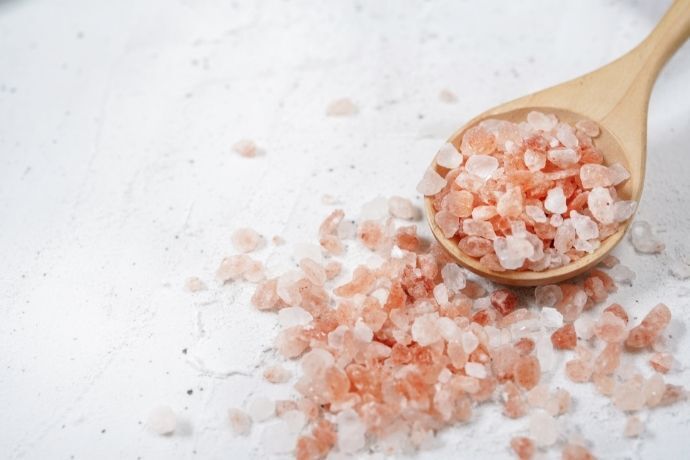
To start this newsletter in the best possible way, we have separated five topics that address essential issues for a good understanding of what Himalayan pink salt is. Learn the origin of this salt, what it is used for, its properties and a little more!
Origin and history of pink salt
As already mentioned, the Himalayan pink salt originates from some mines present in the Himalayan Mountains region and can only be produced there. Even this exclusivity and the way of harvesting the salt, which is the same for centuries, make possible the purity and medicinal value of the spice.
According to experts in the field, most likely the Himalayan pink salt mines are the result of the accumulation of sodium chloride, which is the salt we know, at the bottom of underground water bodies. These submerged rivers were then partially fossilized, creating the colossal salt structures that can be seen and exploited today.
What is Himalayan pink salt used for?
Himalayan pink salt serves as a healthy substitute for regular refined table salt. This oriental spice can be used in kitchens and other places for seasoning food in the exact same way as its industrialized "cousin".
The difference, as already mentioned, is that pink salt keeps all the nutrients and properties common to salt, which are lost in the refining process to which common white salt is submitted.
Pink salt characteristics
Besides the color and the way of harvesting that are different from the common salt, the Himalayan pink salt presents some other disparities in relation to the conventional seasoning.
The first one is the texture. Because it is not harvested with conventional tools and techniques, where there is even the use of chemical substances, pink salt ends up having larger grains than common white salt. In a handful of Himalayan salt it is possible to see the "pebbles", while in common salt it is only possible to see the powder.
In the composition of this natural element lies another crucial difference. Because it has not lost essential minerals in the extraction process, pink Himalayan salt has a more intense taste and is "saltier" than its more popular counterpart.
Why is Himalayan salt pink?
Experts say that Himalayan salt has about 83 more minerals in its composition than refined salt. As already mentioned, this type of salt reaches our tables still "intact" because of the way it is extracted from the mines.
Among these minerals, one of the most abundant is iron. As we know, iron oxidizes when exposed to moisture and that's exactly what gives the salt its pink color. However, in the case of Himalayan pink salt, the oxidation of iron happens in a less impacting way because it occurs away from the exposure to sunlight and weather, which only enriches the seasoning.
Properties of the Himalayan pink salt
So far we have seen some peculiarities that confirm that the pink Himalayan salt is indeed a special natural product. But, to fix its differentials in the readers' minds, we have prepared a short list that compiles its main properties. See:
- Much higher purity level than other types of salt;
- Preservation of essential minerals and other natural compounds;
- The mines from which it is extracted are millenarian and totally untouched, therefore having no incidence of contamination whatsoever;
- It has a lower sodium concentration than common salt (about 250mg for each 1g of salt);
- Greater seasoning capacity;
- Increased food preservation capacity when used for that purpose;
- Among other properties.
Benefits of Pink Salt
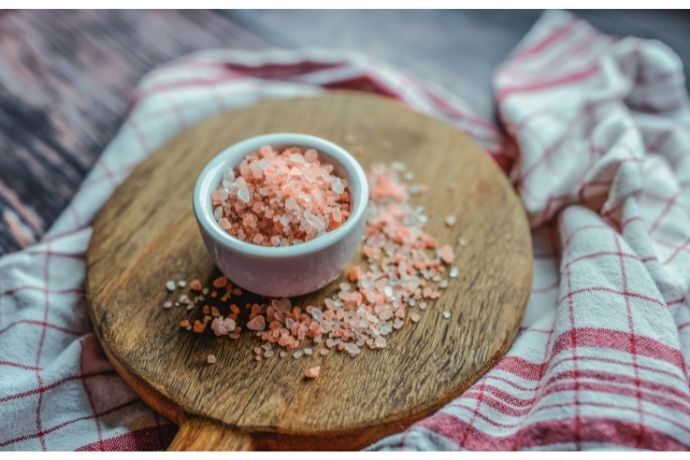
Learn now, in a list with 11 precious topics, the main benefits of pink Himalayan salt. Learn why this natural product has such a good reputation around the world!
Increased purity
One of the main differentials of Himalayan pink salt in relation to common white salt and other types of industrialized salts, is its purity. From the type of place where it is extracted, which are thousand-year-old mines untouched by men, to its peculiar way of harvesting, this natural product is really pure.
This is what in fact gives pink salt all its differentials, because the fact that this product has neither lost compounds nor suffered from the addition of substances in a refining process, maintains all its other properties.
Lower amount of sodium
When compared to common salt, pink salt has a much lower amount of sodium chloride. It is estimated that for each 1g of Himalayan pink salt there is only 250mg of the substance that is the basis for any type of salt.
This feature is important because it has been proven that excessive consumption of sodium can cause several types of diseases such as cardiovascular and kidney diseases, for example.
In the composition of pink salt there is a good balance between sodium chloride and other substances, which causes that only the benefits of sodium are extracted, avoiding the excess that is harmful.
Lower iodine concentration
Like sodium chloride, iodine is another important substance for the proper functioning of the human body, but it should not be consumed in excess.
There are ideal levels for the amount of iodine in the body and it is important to stress that this mineral is responsible for helping regulate several functions of the metabolism, especially those related to hormones.
However, excess iodine in the body can cause opposite effects, with the appearance of disorders especially in the thyroid gland and the lymphatic system.
Making a counterpoint to common salt, which generally receives a large intake of iodine, pink Himalayan salt has moderate amounts of the mineral and does not suffer from summary additions of the element, which is on the list of minerals preserved in its extraction.
Better absorption
Pink salt is better absorbed by the digestive system because of the integral condition of its components. Because they have not undergone artificial chemical alterations, the minerals present in the substance are more easily integrated into the bloodstream and serve as important nutrients for the body.
In the case of common salt, which loses several minerals and is chemically modified to gain refinement, this characteristic is lost. The substances are absorbed more slowly and incompletely, which can produce adverse effects.
Balances the pH by reducing the body's acidity
Vital organs such as kidneys and liver are responsible for capturing and processing substances that enter the body. When they are in full operation these components are able to eliminate toxins and prevent the body's acidity, which occurs with pH imbalance, from getting out of control.
In this sense, the Himalayan pink salt has among its list of capabilities a strong power to help the organs that detoxify the body, besides acting in the bloodstream itself by cleaning it.
With this, it is possible to say that the consumption of this special type of salt can reduce the acidity of the body, avoiding liver, kidney, intestinal and stomach problems, for example.
Strengthens the body
The whole range of benefits caused by the exchange of common salt for pink Himalayan salt presupposes a gradual strengthening of the body.
With less sodium, iodine and a lower rate of acidity, the body tends to function much better, fostering mood and energy to the individual. Allied to this, we have some other benefits that we will talk about below.
Increases hydration
Contrary to what many people think, dehydration of the body does not occur by the loss of liquid pure and simple. The process that leads the body to become dehydrated is the result of the loss of essential minerals and electrolytes that go away from the body through sweat and urine.
By having an immense range of essential minerals preserved in its composition, the pink Himalayan salt replenishes the elements lost in perspiration and in the general loss of water from the body, increasing hydration levels.
Improves blood circulation
The components present in pink salt, besides being better absorbed by the body, do not accumulate inside the arteries and veins like some other types of salt. On the contrary, the minerals present in Himalayan salt help the blood flow through the vascular system.
With this aid, there is a decrease of plaques and fat accumulation in the arteries, which are the elements responsible for several diseases. Thus, strokes, varicose veins, aneurysms and other ills caused by arterial and venous obstructions are avoided.
Reduces blood pressure
Hypertension, also known as high blood pressure, is caused by narrowing or clogging of the vascular passages, which decreases blood flow and increases pressure within veins and arteries. This condition causes a number of problems and can even lead to death.
By having components that unblock the vascular channels, the Himalayan pink salt shows itself as a possible ally in the fight against increased blood pressure. To obtain the benefits just exchange the common salt for the oriental spice in the daily consumption of the seasoning.
Relaxes the muscles and fights fatigue
The regular consumption of pink Himalayan salt includes in the bloodstream minerals such as magnesium and potassium, responsible for strengthening the muscle and bone structures, preventing the wear of fibers and reactions such as muscle spasms and cramps.
In addition, the use of pink salt in specially prepared baths can also help against pain and muscle tension. In these cases, the substances contained in the compound are absorbed by the skin and go directly to the places where there are inflammations and other adverse reactions, causing an analgesic and therapeutic effect.
Acts against respiratory diseases
Himalayan salt also has several types and external uses, such as in bath salts, which was mentioned in the last topic. Similarly, the substance is also used to compose lamps and incense sticks, very common in the East, which exude beneficial gases to the human respiratory system.
In the case of both lamps and incense sticks, elements that heat the salt are placed near the pink salt stone which then slowly evaporate, creating the medicinal gas. When this salt vapor is inhaled, its components enter the entire respiratory system eliminating bacteria, fungi and viruses that cause diseases in the sector.
Further information on pink Himalayan salt
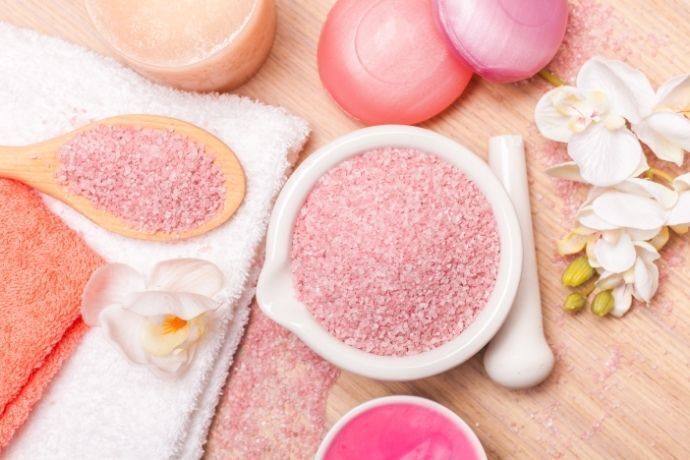
Now, to finish our article, we have brought you some more relevant information about Himalayan pink salt which are arranged in five informative topics, check it out!
Ways to consume Himalayan pink salt
The two main ways to consume Himalayan pink salt is using the substance as seasoning for food in general, just replacing conventional salt, or in the preparation of barbecue meats, salads and canned food.
It is important that the user observes some details before buying the pink salt, because the correct consumption of the product depends on it. In general, the grains of Himalayan salt are larger than those of common table salt, however, the pink salt specific for common seasoning is slightly more refined, while the salt used for barbecue, for example, has much larger crystals.
Contraindications and possible side effects of pink salt
Just like any other product, if consumed in excess Himalayan pink salt can be harmful to health. Despite having a balanced composition and low amounts of elements such as sodium and iodine, the exaggerated consumption of salt from the mountains can cancel its benefits and fill the body with substances that can be harmful.
In addition, people who are sensitive to the consumption of any type of salt need to be careful with Himalayan salt as well. These are children, the elderly, pregnant women, those with chronic digestive tract diseases and severe cardiovascular conditions.
Price and where to buy Himalayan pink salt
One of the negative points about pink salt is its price, which is usually quite high. To have an idea, while a kilo of conventional table salt costs a few cents, a kilo of Himalayan salt can cost more than R$ 60,00 in some regions of Brazil.
According to traders who sell the product, the high prices are due to the process of transporting the salt that comes from the Himalayan Mountain region to Brazil. Anyway, the high prices discourage many people who want to start consuming the product.
For those interested, the Himalayan pink salt can be found in supermarkets, natural product stores, pharmacies and other specialized establishments throughout the national territory.
However, it is important to stress that Himalayan salt is the target of many fakes and therefore it is of utmost importance to note this when you are buying the product.
How to recognize a pink salt that is not real?
As previously mentioned, because it has become a world-renowned product, pink Himalayan salt is a target for criminals who create fakes and market them under the product's name.
The cheaters use sea salt, also known as rock salt or "cow salt" and just color the product with a pink dye, implying that it is Himalayan salt. However, to know if the salt is real or not, there are some crucial tips. See:
Product Price : as has also been informed, pink salt is expensive compared to other types of salt. Therefore, if the supposed pink Himalayan salt is far below the average price of the product in Brazil, it is probably not true;
Moisture in the packaging : the real Himalayan pink salt is extremely dry. If in the package observed there is some kind of moisture, it is because the salt contained in it did not come from the Khewra mine;
Coloration The original color of pink salt is a soft pink tone, similar to that seen in the plumage of flamingos. If a supposed Himalayan salt has a pinkish-pink or very reddish color, for example, it is probably a fake.
Pink salt or common salt: which one to choose?
The discussions around the consumption or not of Himalayan salt revolve around its benefits and the option it presents compared to common salt.
However, it should be stressed that the benefits attributed to this Oriental spice are still being studied and have preliminary results for the time being. In addition, it should also be remembered the high price of the special product.
On the other hand, there is no longer any doubt that pink salt has far less iodine and sodium chloride than regular salt, plus it has all the essential minerals retained and zero additions that can be harmful to health.
In this case, replacing refined white salt with pink Himalayan salt seems to be a wise measure from the point of view of health benefits. It is also up to the user to analyze the economic feasibility of the substitution.
Himalayan pink salt has several benefits!
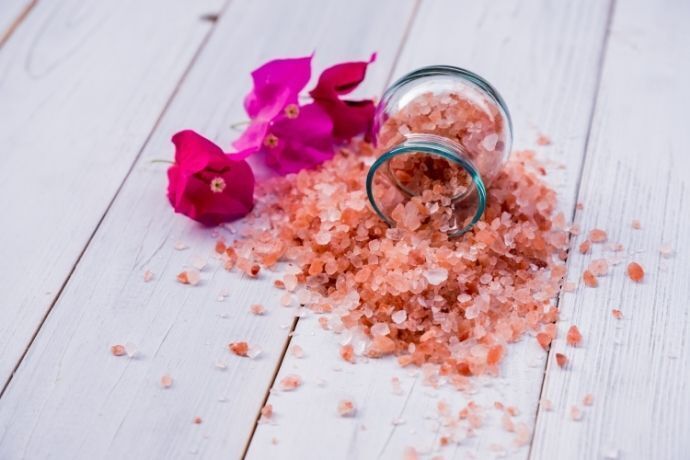
As we have seen throughout this informative article, pink Himalayan salt is a rich product in many ways. Its purity and preservation evoke the true role of salt in human health, throwing out the harm that the consumption of refined salt has already proven to have.
Although the studies on the benefits of pink salt are still in early stages, its properties are already more than confirmed. Therefore, the judgment about the consumption or not of the product is individual responsibility, where price, availability and originality of the product should be observed.

